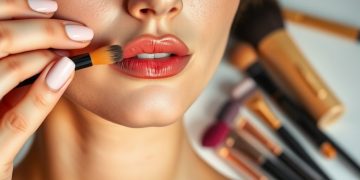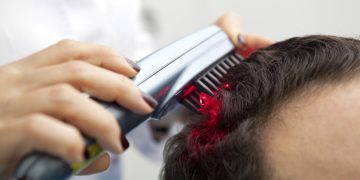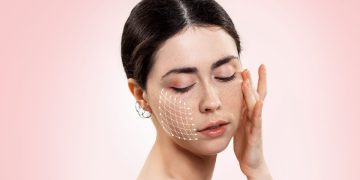In the ever-expanding lexicon of wellness and beauty, a new term has emerged that challenges the very foundation of modern skincare routines: “skin fasting.” The concept, which advocates for periodically abstaining from all or most skincare products, promises a reset for overworked skin, claiming to allow its “natural balance” to restore itself. Proponents suggest it can reduce dependency on products, calm sensitivity, and even improve breakouts. But in a world where dermatology consistently champions the importance of a consistent regimen with actives like retinoids and antioxidants, does this trend hold any scientific water? Is skin fasting a legitimate detoxification method grounded in biology, or is it a misguided myth that could ultimately undermine skin health?
This article delves deep into the philosophy and purported science behind skin fasting, examining it through the critical lenses of its proposed “detox” approach, the actual biology of the skin cycle, and the evidence-based insights of board-certified dermatologists. By separating anecdotal claims from physiological fact, we can determine whether this trend is a revolutionary approach to skin autonomy or a potentially detrimental fad.
The Purified Promise: Deconstructing the “Detox” Approach
The central tenet of skin fasting is built upon the idea of “detoxification.” The argument posits that modern skincare, with its constant barrage of serums, creams, and acids, has overwhelmed the skin’s innate abilities. It suggests that by stripping everything away, we are allowing the skin to “breathe” and purge itself of accumulated toxins and product buildup, thereby “rebooting” to a more natural, self-sufficient state.
This narrative is compelling in its simplicity, but it fundamentally misinterprets human physiology.

The Body’s Built-In Detox Systems:
The human body is equipped with highly sophisticated and efficient detoxification organs: the liver and the kidneys. The liver processes and neutralizes toxins from the bloodstream, which are then filtered out by the kidneys and excreted in urine. The skin, specifically the sweat glands, plays a minor role in excreting water and small amounts of urea and salts, but it is not a primary organ for purging the body of the “toxins” that skincare marketing often references. The idea that ceasing product use triggers a massive detoxification event through the skin is not supported by biological science.
The “Product Buildup” Fallacy:
While it is true that heavy occlusives, silicones, or improperly formulated products can sometimes lead to clogged pores (comedogenicity), this is not a universal issue. Most well-formulated, non-comedogenic products are designed to absorb, degrade, or be cleansed away without leaving a permanent residue. The solution to product-related congestion is not a complete fast, but rather a strategic simplification of one’s routine, identifying and eliminating the specific culprit—not all beneficial ingredients.
The “Letting Skin Breathe” Misconception:
The skin does not “breathe” by taking in oxygen from the air; it receives its oxygen supply via hemoglobin in the blood from the lungs. The stratum corneum, the outermost layer, is designed to be a barrier, not a lung. While avoiding heavy, pore-clogging makeup can be beneficial, the notion that all skincare products suffocate the skin is a gross oversimplification. In fact, a compromised barrier from lack of moisturization can be far more detrimental to skin function.
In essence, the “detox” rationale for skin fasting is a biological misnomer. It applies a concept from fad diets to an organ that operates on entirely different principles.
The Biological Clock: How Skin Fasting Aligns (or Misaligns) with the Skin Cycle
A more nuanced argument for skin fasting involves the skin’s natural renewal cycle. The skin cycle refers to the process where new skin cells are born in the basal layer, gradually rise to the surface, and are eventually shed as dead corneocytes. This process typically takes about 28 days for a young adult, slowing down with age.
Proponents of fasting suggest that constant exfoliation (both chemical and physical) and active ingredients can “confuse” or “rush” this natural cycle. They propose that by taking a break, we allow the skin to return to its innate, pre-determined rhythm.
The Flaw in This Logic:
While the skin does have a natural cycle, it is not a perfectly tuned mechanism that is easily thrown off balance by topical products. In fact, many dermatological treatments are designed to positively influence this very cycle.
- Retinoids work by accelerating cellular turnover, which is beneficial for sloughing off pigmented, damaged cells and revealing fresher, more evenly toned skin underneath.
- Chemical Exfoliants (AHAs/BHAs) help to dissolve the “glue” between dead skin cells, facilitating their shedding. This prevents the buildup that leads to dullness, clogged pores, and rough texture.
Abruptly stopping these products does not “reset” the cycle to a youthful state; it simply allows it to revert to its natural, and often slower, pace. For someone struggling with concerns like acne, hyperpigmentation, or photoaging, this means the benefits of increased cell turnover—clearer pores, faded dark spots, and smoother texture—are lost. The skin doesn’t “reset”; it simply returns to its unassisted, and often less optimal, state of renewal.
Furthermore, for the crucial process of barrier repair, cessation of key ingredients can be counterproductive. Ingredients like ceramides, niacinamide, and fatty acids are not “interferences”; they are essential reinforcements that provide the building blocks the skin needs to maintain its protective structure. Denying the skin these components, especially in harsh environmental conditions, can weaken the barrier, leading to increased transepidermal water loss (TEWL), dryness, and heightened sensitivity.
The Professional Verdict: Weighing Dermatologist Insights
When evaluated through the lens of evidence-based medicine, the consensus among dermatologists is overwhelmingly skeptical of skin fasting as a universal “method.”
The Potential Risks and Downsides:
Dermatologists highlight several significant risks:
- Barrier Compromise: The skin barrier requires consistent hydration and lipid support to function. Abstaining from moisturizer, especially in dry or cold climates, can strip the skin, leading to irritation, cracking, and inflammation. A compromised barrier is more susceptible to environmental pollutants, allergens, and pathogens.
- Undermining Treatment Plans: For patients using prescription medications for conditions like acne, rosacea, or eczema, stopping use can lead to a swift and severe rebound flare-up. The progress made over weeks or months can be undone in a matter of days.
- Accelerated Photoaging: Perhaps the most critical risk is the cessation of sunscreen. Even a short break from daily sun protection can result in cumulative UV damage, breaking down collagen and elastin and contributing to wrinkles, sun spots, and increased skin cancer risk. No dermatologist would ever endorse a “fast” from sunscreen.
The Nuanced Exceptions:
Despite the overarching criticism, dermatologists acknowledge that a simplification of routines can be beneficial in specific scenarios:
- Contact Dermatitis: If a patient is experiencing red, itchy, inflamed skin and the culprit product is unknown, a period of using only the blandest, most hypoallergenic cleanser and moisturizer (a “product elimination diet”) is a standard diagnostic procedure. This is not a fast for detox, but a controlled process of elimination to identify an allergen or irritant.
- Over-Exfoliation: For individuals who have severely compromised their barrier through excessive use of acids and retinoids, a temporary “holiday” from actives is necessary to allow the barrier to heal. However, this healing process is actively supported by using barrier-repair ingredients like ceramides and cholesterol, not by leaving the skin completely bare and vulnerable.
In these cases, the approach is not a passive “fast,” but an active, strategic “reset” guided by the goal of repair and the reintroduction of a more balanced routine.
Conclusion: A Trendy Myth with a Kernel of Cautionary Wisdom
So, is skin fasting a myth or a method? Based on the physiology of detoxification, the biology of the skin cycle, and the consensus of dermatological expertise, it is overwhelmingly a myth when framed as a beneficial detox or reset for the general population.
The core premise is flawed. The skin does not need to fast from well-formulated, beneficial products any more than our body needs to fast from nutritious food. The concept of “resetting” to a more natural state ignores the fact that our skin is constantly battling unnatural environmental aggressors like pollution and chronic sun exposure, against which it needs all the help it can get.
However, the popularity of skin fasting serves as an important cultural symptom. It is a reaction to the overwhelming complexity, cost, and potential for over-complication in modern skincare. Its valuable takeaway is not the act of fasting itself, but the principle of mindful simplification. It reminds us to periodically audit our routines, eliminate redundant or irritating products, and focus on the essentials: a gentle cleanser, a effective moisturizer, and a daily broad-spectrum sunscreen. For those using actives, it underscores the importance of listening to your skin and taking a break when signs of barrier distress appear.
Ultimately, the path to healthy skin is not through deprivation, but through consistent, intelligent, and evidence-based support. The true “reset” your skin needs is likely not a fast, but a smarter, more balanced diet of ingredients.












































